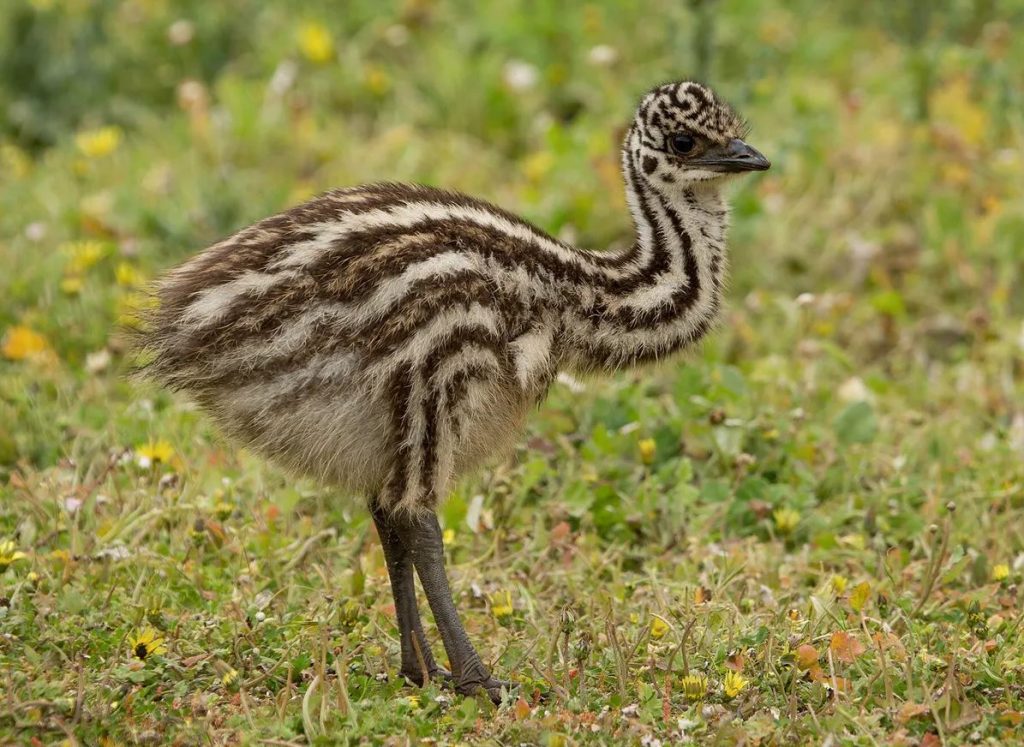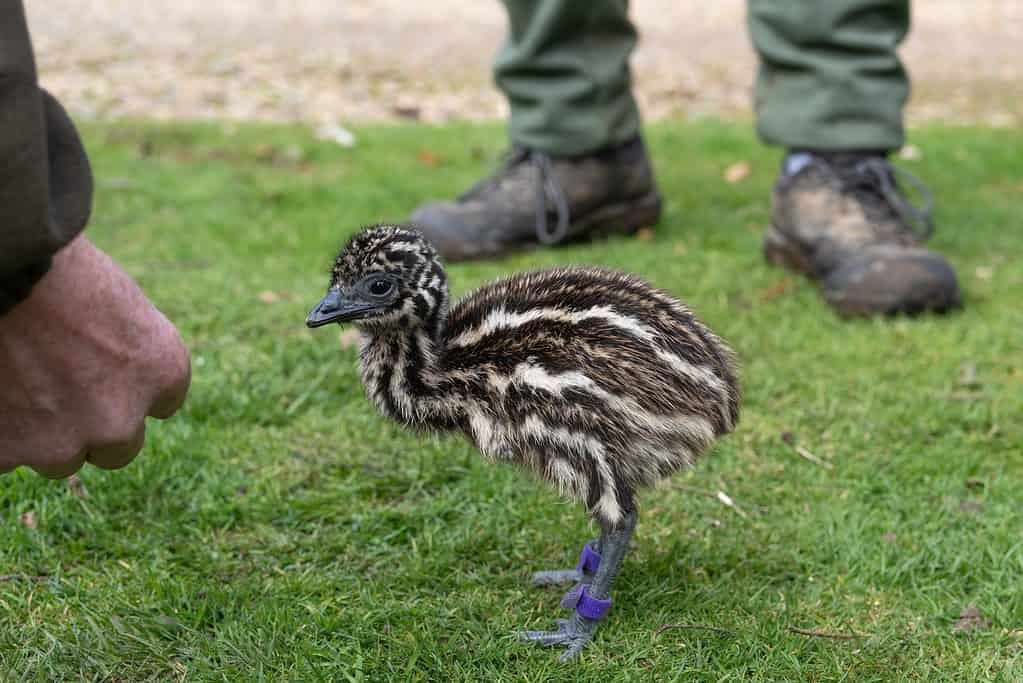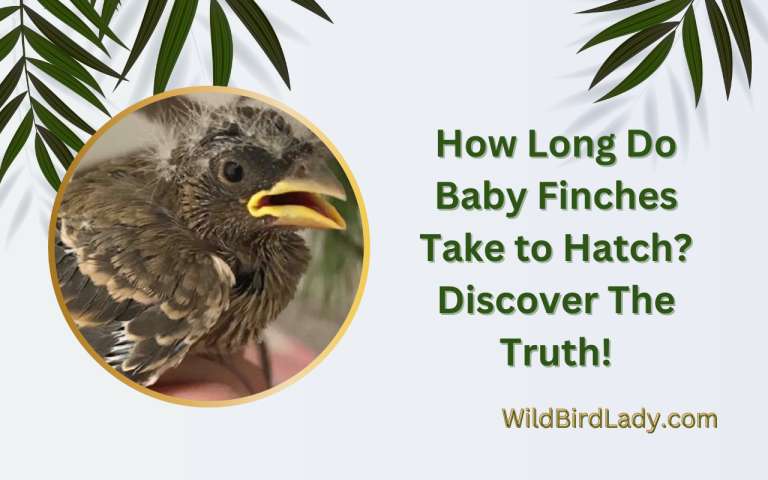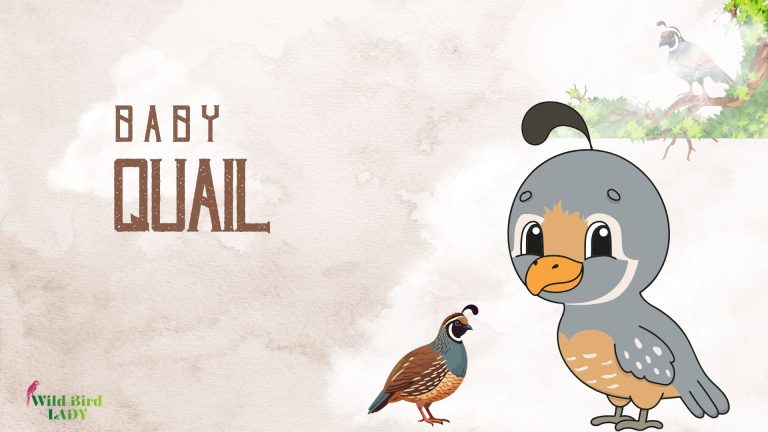Baby Emu: 9 Adorable Facts About These Fluffy Speedsters You Didn’t Know!
By Rifat Ahmed – Birdwatcher with 13 Years of Experience
There’s something magical about witnessing a baby emu take its first wobbly steps under the harsh sun of the Australian outback. As someone who has spent over a decade observing birds across continents, I can say without hesitation—few hatchlings match the combination of cuteness, curiosity, and sheer speed of the baby emu. These fluffy, striped chicks are born ready to run and explore, and their survival skills are just as impressive as their charm.
In this article, I’ll share 9 little-known but heartwarming facts about baby emus—also called chicks or hatchlings—and what makes them stand out in the bird world. Let’s dive into the fascinating life of one of nature’s most underrated fluffballs.
Baby Emus Are Born with Stripes (and It’s Not Just for Show)
Unlike their tall, shaggy brown parents, baby emus hatch with bold black-and-white stripes running vertically down their bodies. These aren’t just for decoration—the stripes provide natural camouflage, helping them blend into the tall grasses and shadows of the Australian wilderness.
This adaptation is crucial in their first few months, when they’re most vulnerable to predators like dingoes, foxes, and eagles.
“Their stripes help them stay hidden, which increases their survival odds dramatically in the wild,” says avian biologist Dr. Zoe Elmer in an interview with All About Birds.
They Start Walking—and Running—Within Hours of Hatching
If you think human toddlers are quick to move, wait until you see a baby emu in action. Within just a few hours of hatching, baby emus can walk, balance, and even break into a sprint.
It’s this early mobility that’s earned them the nickname among birders: “fluffy speedsters.”
I once observed a chick dash nearly 20 feet in under 5 seconds—legs wobbling like springs, wings flapping for balance. It’s both comical and impressive. Emu chicks have to be fast because their parents don’t feed them—they’re expected to forage for themselves from day one.
Both Parents Guard the Nest, but Dad Does the Heavy Lifting
Here’s a surprising twist in emu parenting: after the female lays the eggs, she leaves the nest. From there on, it’s the male’s job to incubate the clutch—sometimes up to 10 eggs.
For 8 long weeks, the father emu sits on the nest, barely eating or drinking, turning the eggs several times a day. When the chicks hatch, he becomes their sole protector, leading them through the landscape, teaching them to forage, and guarding them fiercely.
According to the Cornell Lab of Ornithology, “The male emu can lose up to one-third of his body weight while incubating the eggs.”
This kind of dedication is rare in the bird world, and watching a father emu herd his striped chicks is nothing short of heartwarming.
They Grow Shockingly Fast—Up to 2 Pounds a Week!
Emus are the second-largest birds in the world (after ostriches), and their rapid growth starts from day one. A baby emu can gain 1 to 2 pounds per week during the first few months. Within 6 months, they’re often taller than a golden retriever.
This incredible growth rate means baby emus require a protein-rich diet, often made up of:
- Insects (grasshoppers, beetles)
- Seeds
- Small fruits and berries
- Tender shoots and leaves
If you ever raise one in captivity, you’ll need to keep up with their appetite. When I worked with a wildlife sanctuary in Queensland, we had to refill the chick feeders multiple times a day!
Baby Emus Make Soft Whistles and Peeping Sounds
Before they develop the deep-throated booming calls that adult emus are known for, chicks make adorable peeping and whistling noises. These sounds help them communicate with their father and siblings, especially when foraging or signaling distress.
I’ve heard these calls up close—they’re surprisingly gentle and melodic, like the sound of a penny whistle. It’s their way of saying, “I’m over here,” or “Wait for me!”
Fun Fact: Researchers believe baby emus can recognize their siblings’ calls and stay close to them during early development.
They Can Travel Up to 25 Miles in a Single Day
Baby emus don’t just sit around. Alongside their dad, they can walk and explore up to 25 miles a day, even at a very young age. Their powerful legs and boundless energy allow them to trek through forests, scrublands, and open plains as they follow the family group in search of food and water.
This movement also helps them develop stronger muscles early in life, preparing them for a lifetime of running—adult emus can clock speeds of 30 mph (50 km/h).
Baby Emus Are Surprisingly Social
Despite their rugged start in life, baby emus are incredibly social creatures. They often form tight sibling groups, running and feeding together like a team. I’ve seen broods of up to 8 chicks following their father in a perfect line—like fluffy ducklings on stilts.
They also enjoy “play” behavior—chasing one another, picking up pebbles, and even mimicking adult emus. These behaviors aren’t just cute—they help chicks build coordination, learn survival skills, and strengthen their social bonds.
Predators Are a Constant Threat—But Dad Has a Plan
In the wild, baby emus face danger from dingoes, monitor lizards, wedge-tailed eagles, and even invasive species like red foxes. However, their father isn’t just a passive guide. He will hiss, charge, and kick at predators with his sharp claws if they come too close.
One remarkable moment I witnessed in Western Australia involved a father emu shielding four chicks under his body during a surprise hailstorm. His back took the brunt of the ice while the chicks nestled safely beneath him.
“The male emu’s defense behaviors are key to chick survival,” notes ornithologist Dr. Clara Henshaw in a recent All About Birds piece.
Most Don’t Survive to Adulthood—But the Strongest Thrive
Here’s a sobering truth: despite their early speed and camouflage, only 50% or fewer of baby emus make it to adulthood in the wild. Predation, environmental conditions, and food scarcity all take a toll.
But those that do survive become incredibly resilient, independent birds that can live 10 to 20 years in the wild and even longer in captivity.
As a birdwatcher, there’s something profoundly humbling about witnessing the journey of a chick from striped puffball to towering adult. It’s a testament to nature’s design and the strength of instinctual parenting.
How to Spot Baby Emus in the Wild (or Ethical Sanctuaries)
If you ever visit Australia, especially during the breeding season from May to August, look for emu chicks in national parks like:
- Kakadu National Park
- Grampians National Park
- Flinders Ranges
Be respectful—keep your distance and never approach or feed wild emus. If you want a closer look, visit accredited wildlife sanctuaries like:
- Featherdale Sydney Wildlife Park
- Healesville Sanctuary in Victoria
You may even get to hear the soft whistles of a chick or watch them dart through grass like tiny torpedoes with legs.
Final Thoughts from 13 Years of Birdwatching
Of all the baby birds I’ve observed—from owlets to ducklings to eaglets—baby emus stand out. Not just for their cuteness or speed, but for their fierce independence and the tender, often overlooked role of their fathers.
Whether you’re a seasoned birder or just a curious reader, I hope you’ve found a new appreciation for these striped marvels. The next time you see a video or image of a baby emu waddling across the red dirt, remember: behind those eyes is a survivor in the making.
FAQs About Baby Emus
Q: What is a baby emu called?
A: A baby emu is simply called a “chick” or “hatchling.”
Q: What do baby emus eat?
A: They eat insects, seeds, tender plants, and berries. In captivity, they may be fed chick starter with added greens and bugs.
Q: Can you keep baby emus as pets?
A: It depends on your country or state. In Australia and the U.S., keeping emus often requires special permits and proper land. They’re not typical pets—they grow very large and need plenty of space.
Q: Do baby emus imprint on humans?
A: If hand-raised, yes. They may bond closely with their human caretakers, though this can lead to behavioral challenges later if not properly socialized.
You May Also Like:
- What Do Swans Eat? The Elegant Diet of These Graceful Birds Revealed!
- Inside a Penguin’s Mouth: What Scientists Found Will Shock You!
- Do Bald Eagles Mate for Life? Discover the Truth About Their Love and Loyalty!









